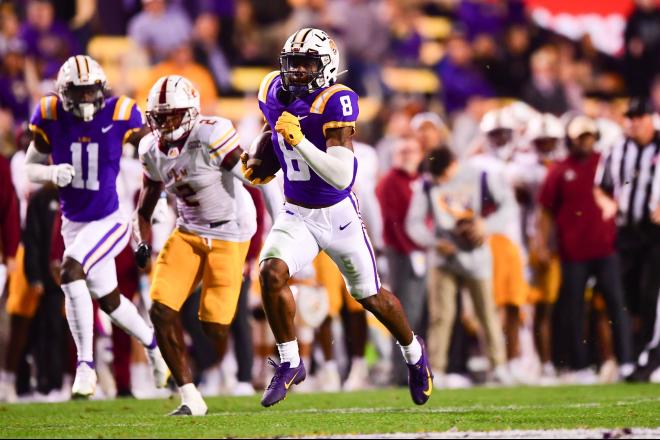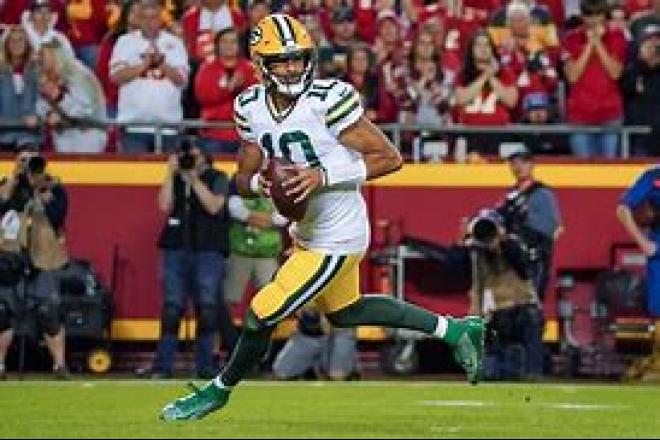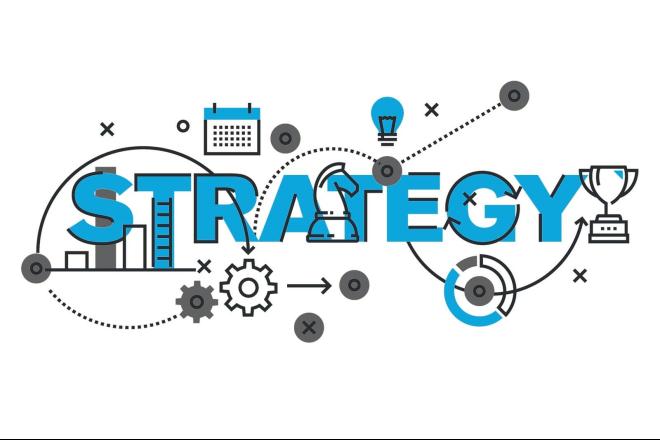In my previous articles about dynasty strategy, I tried to emphasis that dynasty drafts are all about efficiency. Every pick is a dart throw. When you exchange something with known value for something with unknown value you want to do so in a way where you know the odds and are getting better odds than the other members in your league.
Furthermore, draft picks always have appreciating value. Players might have appreciating value in their first three years, then generally have flat or declining value after that.
Also, you don't win your league's championship in the draft, especially in dynasty leagues. If you are an experienced fantasy football player, you know that your roster will look quite a bit different at the end of the year than that sparkling shiny group of players you have at Week 1. The goals of your dynasty draft are twofold:
- Give your team enough ammo to be a playoff contender - nothing more
- Maximize the overall appreciating value of your team and draft picks
Okay, so let me explain by example.
Last year, my team entered the playoffs with the 6th seed. Most would think because a team has come in with a low seed, they have a low chance to win the playoffs. However, shortly before the playoffs I acquired Jerick McKinnon and Miles Sanders at bargain prices from teams that were moving to rebuild mode. In a league where the average score was 122.7 Weeks 1 through 14, my team averaged 135.1. But after the acquisition of McKinnon and Sanders, my team averaged 172.6 fantasy points per week, Weeks 14 through 17. My team was a literal buzz saw and had the highest fantasy point total in the playoffs. I still only came in 3rd place, but my team had a very good chance to win the championship despite coming in with only the 6th seed.
I call those last minute acquisitions "playoff boost afterburners". What your team does in the regular season, versus what it does with its after burners on, can be a night and day difference. Furthermore, I acquired McKinnon and Sanders with very efficient use of draft picks. And this is the emphasis of this article. My dynasty draft in 2023 has set me up again for the same scenario this year. I focused on staying competitive enough to get a playoff berth and maximizing the appreciating value of the team without making a lot of low probability dart throws.
Let's look at the results first, then I will explain how I got there.
First, let's look at draft picks. At the end of the 2022 season I had the following draft picks in my arsenal:
- 2023: 1.07, 1.09, 2.03, 2.05, 2.12, 3.04
- 2024: 3 2nds, 4 3rds
Now after my draft I have:
- 2024: 2 1sts, 4 2nds, 4 3rds
- 2025: 1 1st, 1 2nd, 2 3rds
I ended up with more 1sts round picks and more total picks than I started with. Magic, right? Well what about my roster? Did it get better, get worse or stay the same?
Here is my 2023 roster compared with my roster at the end of the 2022 season:
| End of 2022 | Start of 2023 |
| QB | QB |
| Jalen Hurts | Jalen Hurts |
| Anthony Richardson | |
| Gardner Minshew | Gardner Minshew |
| Bailey Zappe | |
| Mike White | |
| RB | RB |
| Cam Akers | Cam Akers |
| James Cook | |
| Brian Robinson | |
| Tyler Allgeier | Tyler Allgeier |
| Jerick McKinnon | Jerick McKinnon |
| Jerome Ford | |
| Clyde Edwards-Helaire | |
| Leonard Fournette | |
| Rashaad Penny | |
| Miles Sanders | |
| WR | WR |
| Mike Evans | Mike Evans |
| Tyreek Hill | Tyreek Hill |
| Zay Jones | Zay Jones |
| Deebo Samuel | Deebo Samuel |
| Jameson Williams | |
| Josh Reynolds | Josh Reynolds |
| Brandin Cooks | |
| Darnell Mooney | |
| Michael Wilson | |
| Greg Dortch | |
| TE | TE |
| Evan Engram | Evan Engram |
| Jelani Woods | Jelani Woods |
| Dalton Kincaid | |
| Tyler Conklin | |
| PK | PK |
| Graham Gano | Graham Gano |
| Def | Def |
| Kansas City Chiefs | Kansas City Chiefs |
Here is how I characterize my team:
- QB: Solid starter for 2023 & solid development player for the future
- RB: My team's greatest weakness. I don't have an RB1, but I have some decent RB2s with upside potential.
- WR: Solid veteran players. I don't have development players for the future. Michael Wilson was my 2nd favorite prospect in a very weak WR class overall.
- TE: Solid veteran with two solid development players.
- PK: Okay.
- Def: Could use an upgrade.
I have a draft pick arsenal to go out and just buy an RB1, but the question is, do I need to? Do I have enough fire power now to land a playoff berth? I think so. So I shouldn't pay a lot for a projected top RB now. It is better to wait until the playoffs are approaching and to make purchases based on actual known needs at the actual time of need. If I make that purchase now, I will pay a lot and the player might be injured before the playoffs. It is more efficient to acquire a veteran RB that is performing well just before the playoffs on a team that wants to rebuild.
Draft picks are like money in a bank account. We have to budget how we spend them. To consistently be a contender, we must be stingy and only buy what we need, not always what we want.
Okay, so how did I keep a competitive roster, get the consensus best QB and TE in the 2023 draft and end up with more draft picks than I started with? These are the ten trades that got me there:
Pre-Draft Trades:
| Gave Up | For |
| Mike White Greg Dortch |
Desmond Ridder 3.09 |
| Desmond Ridder | 2025 3rd (top) |
| Rashaad Penny 3.09 |
2025 2nd (top) |
| Leonard Fournette | 2024 3rd (mid) |
| Miles Sanders 2024 3rd (low) |
James Cook 1.08 |
| Clyde Edwards-Helaire 2025 2nd (low) |
Jerome Ford 2025 3rd (top) |
| 1.09 | 2024 1st (top) |
The top, mid and low designations are my estimate of where the draft picks will fall in the round.
We keep 24-man rosters in our dynasty league. Because I had six picks, I had to whittle my team down to 18 players. Thus I worked hard to trade players away that I might otherwise have needed to make the hard decision to drop. Going into the draft I still had a total of six picks (1.07, 1.08, 2.03, 2.05, 2.12 and 3.04), but I only needed to drop three players to cut down my roster to 18 players, Bailey Zappe, Greg Dortch and Tyler Conklin.
It wasn't easy to make some of these trades. I didn't want to let go of my workhorse RB Miles Sanders, but James Cook is on the rise and I could probably trade the 1.08 for a high 2024 pick and change during the draft, so I decided to accept that offer.
One of my league mates question trading away Clyde Edwards-Helaire and a 2nd for Jerome Ford and a 3rd. I explained Ford is a 2nd year RB that has the back-up job behind 6-yr Nick Chubb. I believe Ford has the talent to be a starting RB and the metrics show a drop off for RBs after 6 years. On the other hand CEH has had five years to prove himself and hasn't. And of course Leonard Fournette, after yet another RB1 season, was hard to let go of. How could he go from 225.7 fantasy points to only being worth a 3rd round pick so suddenly. There it is - the 7th year drop off that I described in How To Add An RB1 To Your FF Dynasty Team.
Draft picks are never more valuable than they are on draft day. Despite what I believed to be a generally weak draft class, this rule stayed true. I wasn't clearing spots on my roster to fill with players, I was clearing spots to take advantage of this rule. I stuck exactly to my plan (published in The Ultimate Dynasty Draft Strategy) and here is how I traded during the draft.
Trades During the Draft:
| Gave Up | For |
| Darnell Mooney Jameson Williams 1.08 2.05 |
Brian Robinson Brandin Cooks 1.04 |
| 2.03 | 2024 1st (low) |
| 2.12 | 2024 2nd (top) |
Brian Robinson and Brandin Cooks are immediate starters for my team, and the 1.04 pick allowed me to take Anthony Richardson, who I believe is a possible generational talent and I knew would not fall to me with the 1.07 pick. My study on How To Add A QB1 To Your FF Dynasty Team shows that the general trend over the last nine years is QBs tend to peak in their 3rd year. So even though I have Hurts, it is important for me to keep developmental prospects on the roster and therefore acquiring Richardson was a priority.
I like to make a trade balance sheet, that shows the net result of all my trades. This is what the balance sheet looks like:
| Gave Up | For |
| Picks | Picks |
| 2.05 2.12 |
1.04 2024 1st (top) 2024 2nd (top) 2025 3rd (top) 2024 3rd (mid) 2025 3rd (top) |
| Players | Players |
| QB | QB |
| Mike White | |
| RB | RB |
| Miles Sanders Rashaad Penny Clyde Edwards-Helaire Leonard Fournette |
James Cook Brian Robinson Jerome Ford |
| WR | WR |
| Darnell Mooney Jameson Williams |
Brandin Cooks |
What I do to build this balance sheet is I put all the assets I gave up on one side and all the assets I acquired on the other side, and then I cancel out the same or similar assets that appear on both sides. For example, I cancelled the 1.09 pick that I traded away with the low 2024 1st that I acquired, so neither the 1.09 or the low 2024 1st show up on the balance sheet.
Now with the balance sheet we can see the cumulative progress of my trades more clearly.
The only potential rising asset I lost is Jameson Williams. The only player that was a sure starter that I gave up was Miles Sanders. However, I gained three RBs that might rise in value. And there is nothing wrong with adding a veteran WR because WRs have the greatest longevity with respect to holding their value per my study, How To Add A WR1 To Your FF Dynasty Team.
When you look at each individual trade, the purpose is not obvious, but because there is a strategy - a real purpose - behind what I am doing, then when the balance sheet is put together, it pops-out. Will I win the league in 2023? I have no idea. But my team currently seems to be a contender with a lot of appreciating assets, more than any other team in the league. I can drop Gardner Minshew and Josh Reynolds, and have five roster spots open for the 1st Week of waivers. What else could I ask for at this point in the season?
I hope this article is helpful to show how all the research and analytics of my previous articles comes together for a comprehensive dynasty team management strategy that works.





